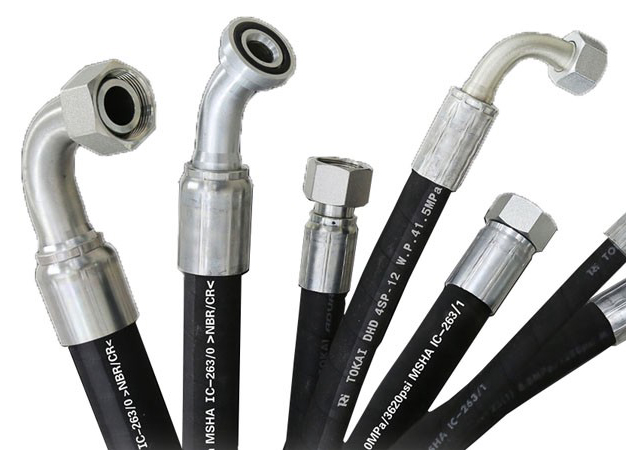A hydraulic hose is used to send hydraulic oil to hydraulic components, valves, actuators, and other hydraulic tools. Any type of hydraulic hoses are required to meet stringent standards to accustom pressure points, loads, and also their position demanded. To perform heavy-duty functions, some engineering elements are assumed to confront the forces within and be flexible enough to bend or reach diverging angles.
In other words, a hydraulic system uses extreme pressurized hydraulic oils to develop mechanical results like stamping and forging. They are commonly employed for wing flaps on aircraft, lifting equipment like jacks, excavators, backhoes, and much more. Hence, regular mechanical hoses are not considered for use in hydraulic systems. As part of an enclosed system, hydraulic hoses must be able to face average internal pressures equalizing 3000 psi and oppose extreme temperatures as well.
Standards of hydraulic hoses
SAE – organization of engineers, has actually set criteria for hydraulic tubes. Since these elements are essential to reliable procedures as well as, in lots of circumstances, human security, hoses have to meet particular requirements for a hydraulic system. SAE J517 supplies general, dimensional, as well as efficiency specs for hydraulic pipes in mobile as well as fixed systems. Standard hose is made of three layers. These layers consist of the inner tube, a reinforcing center layer, as well as a protective outer layer. The design and also product used for the internal layer needs to be engineered to the degree of versatility needed and the sort of fluid to be utilized. Generally, the inner layer is created from a form of synthetic rubber, polycarbonate, or a PTFE material. The middle layer which mostly figures out the toughness is made from a coiled cord or a fabric intertwining that allows versatility, yet is strong sufficient to stand up to the extreme pressures of a hydraulic system. The external layer is a product that shields against contaminants, severe weather conditions, abrasive devices, and sharp items. Installations that attach the hydraulic hose pipe to its resource, a destination, should be sufficient to handle severe pressure too.
Main types of hydraulic hoses:
YES! There are a lot of variatons of hoses but we have gathered the most vital and ideal for you that can align almost all of your needs.
Hose for low pressure applications
Extremely flexible and textile-braided for lighter application usage such as return lines, anti-static delivery lines, as well as air or lube lines. Low-pressure lines are not suitable for stopping or various other safety applications.
Standard hose for high pressure applications
This hose is adaptable and also utilized to moving mineral and also hydraulic oils as well as water/oil solutions. They are in demand for the mining and also oil sectors, building and construction, and farming.
Hose with steel wire braiding
Either dual or single wire braiding and more durable, hoses are used to transfer liquids under extreme pressures, temperatures, and also a vacuum cleaner. These tubes are utilized in oilfields, mining, as well as heavy commercial applications.
Plastic hose
Beneficial for heavy construction, hydraulic lift equipment, and lubrication lines, the polycarbonate hoses are immune to abrasion and also can operate at extremely low temperature levels. Both layers made of a thermoplastic while the center layer provides reinforcement with a fiber net.
Hydraulic hoses are the core of your hydraulic operations. Malfunctions can be expensive. Determining the most effective ones for your pressure rating, resilience, versatility, abrasion resistance, temperature direct exposure, and the material to be carried out normally calls for complex design factors to consider.



Super!!!